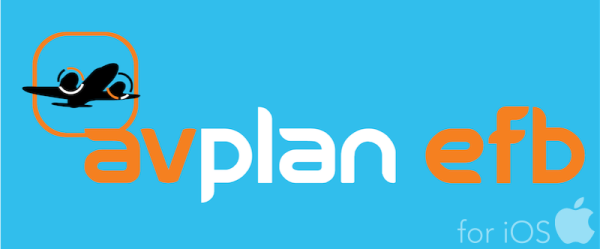This section is a must-read.
It is in two parts, describing how AvPlan models aircraft data in terms of Aircraft Types and as Individual Aircraft of a particular Type.
Types of Aircraft
AvPlan EFB supports any number of Aircraft Types – from simple ultralights right up to multi-engined jets. Simple performance profiles can be created for an Aircraft Type and applied to any flight plan involving an aircraft of that Type. Optionally, any number of detailed performance tables can be created (mainly for higher performance types). The most appropriate table for the prevailing conditions can be selected and used for flight planning.
AvPlan EFB also supports detailed weight and balance calculations based on the WnB characteristics of an aircraft type. This can optionally include multiple loading systems appropriate to the Type.
All aircraft of a given Aircraft Type share common performance and loading characteristics. (C172N, C172R, V35B Bonanza, TBM-850 etc). Therefore the details for an Aircraft Type only have to be defined once. Very many have already been defined. Hence you do not have to start from scratch to define your “Type”. If it is already in the AvPlan database, then simply use it! You can of course create a new Type if you cant find one appropriate to your aircraft.
An Aircraft Type has a set of performance characteristics, loading schemes, etc. It is therefore correct to say that an aircraft that has been modified in some way that changes its performance characteristics (CofG envelope, TAS, fuel burn…) has become a variant of that Type, and as such should be given a different type descriptor and performance parameters even if it still has the same ICAO type identifier. ICAO type identifiers frequently encompass a wide range of very similar, but nonetheless different Aircraft Types . There are many different Type variants under each of the the ICAO “PA28” and “C172” banners, for example.
Individual Aircraft
Individual aircraft profiles consist of two main parts: the Aircraft Type information, which is common to all aircraft of the same Type (all PA28-181’s, all C172N’s), and then the data that are specific to an individual aircraft of that Type: your aircraft!
This individual aircraft part consists of some obvious stuff like the aircraft’s registration, callsign and colour, and a lot of less obvious stuff like details of the avionics fit-out and the capabilities of those avionics systems when used for navigation.
Aircraft of the same Type may have all been made in the same factory, but over time many aircraft either gain or lose weight as a result of modification, repainting and so on. For WnB calculations you must therefore also specify the basic empty weight (BEW) and the Empty Arm of the aircraft, as detailed in the aircraft’s POH and signed off by a Weight Control Authority. This data must exist and must be available to the pilot in command by law, so if you don’t know where to find it you may wish to start searching.
There is no limitation on the number of aircraft assigned to a particular Type in AvPlan. If you have a fleet of aircraft with several aircraft of the same Type or Types, you can create as many individual aircraft instances of each Type as you require.
 Type/instance relationship. Single instance and multiple instance example
Type/instance relationship. Single instance and multiple instance exampleThe Type database
When viewing this list of Types on your device, any aircraft registrations associated with a Type will be listed beside the Type descriptor in parentheses. The image below shows the Types available. (Note that the iPhone version of AvPlan does not show the individual aircraft here due to screen space limitations. But they are still there).
The list is divided into two sections:
- Aircraft Types on Your Device (in the white list)
- This list includes all aircraft profiles that are saved on your device. This list may grow or shrink if you add/delete aircraft types. Swipe right-to-left to reveal the Delete button if required. then Tap it to delete an aircraft profile from your device.
- Any Aircraft of a particular type will be indicated by registrations in parentheses next to the description.
- Other Available Types (in the light blue list)
- Scroll past the first, white part of the list to find a list of Aircraft Type profiles that other AvPlan EFB users have created and kindly shared over the years.
- These are not stored on your device, so they take up no storage room, and they cannot be deleted or edited like the locally stored ones.
- To import an aircraft Type from this list, ensure that you have a connection to the internet and simply tap on the Type name. This will copy the Type definition from the AvPlan servers to your device, and install it in the app. The newly installed Type will now appear in the upper part of the list (see Aircraft Types on Your Device, above). If you wish to, you can edit it. You can also create a specific instance of that Type – an actual aircraft- by tapping Add New Aircraft.
- Enter the callsign/registration (at the very minimum) to create your new aircraft. Tap the back < button several times until you have the option to Save.
 Aircraft Type Database list
Aircraft Type Database listThis view displays the current types defined in the aircraft type database. These types can be used to create your aircraft profile(s).
Aircraft Types can be copied and uploaded and shared with other AvPlan EFB users.
- Tap on an aircraft Type in the white list to view the various sharing methods found under the Options subheading. These include:
- Copy Type – this enables you to create, for example, a variation of a Type (e.g. a Comanche with tip tanks as opposed to one without tip tanks)
- Share Type on AvPlan EFB website: this sends the Type definition to the AvPlan team for evaluation and potential inclusion in the Type Database. If you have created an Aircraft Type profile that isn’t already on the list, please consider sharing it with the AvPlan community so that other AvPlan EFB pilots might benefit from your good work, but also please note that there is no need to send us your aircraft Type if it is already in the blue section.
- Email aircraft details – to send both your aircraft type and specific aircraft details by email to a friend who also uses AvPlan or even to yourself for safe keeping elsewhere.
- Send aircraft details – to send by AirDrop to a nearby iOS device running AvPlan.
Receiving an aircraft file and installing it
- The easiest way (by far) to upload a shared aircraft, assuming that the sender is also using an iOS device, is to use airdrop. If the sender sends to you by airdrop the whole process is almost automatic; just accept the file when it arrives, and follow the prompt to open it with AvPlan. Thats it.
- If you receive an aircraft file by email, the upload process is also fairly straightforward, but there is an extra step:
- The email attachment will have a download button . Do not use it.
- Simply tap on the attachment icon itself. This will open a page that looks like a sea of consciousness (lots of almost meaningless text) . Now use the share button at the top of the page, and share to AvPlan-EFB. Thats’s it. The aircraft file is now installed.
Need more help with this?
Help Centre (Tap and hold to open the Link)


